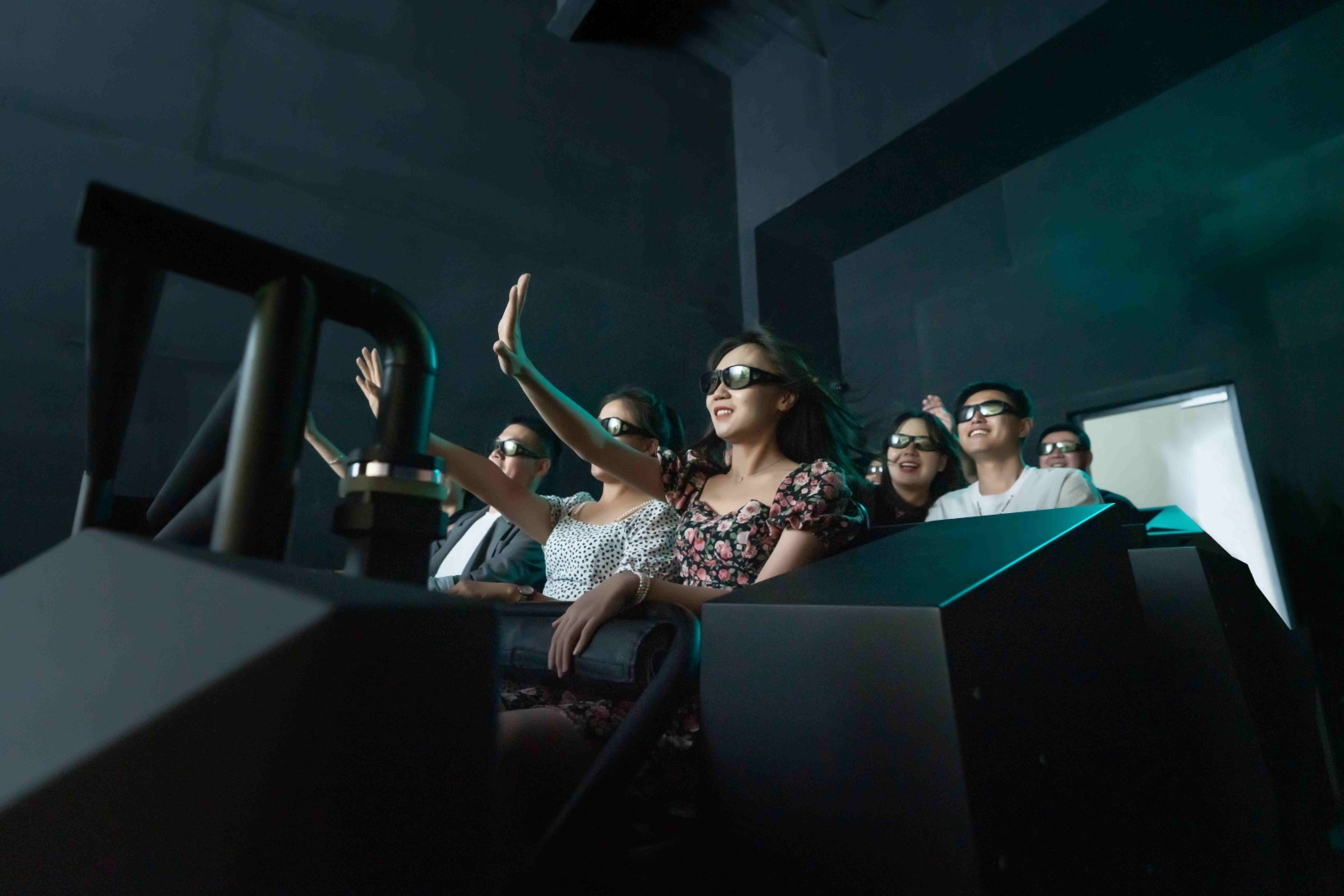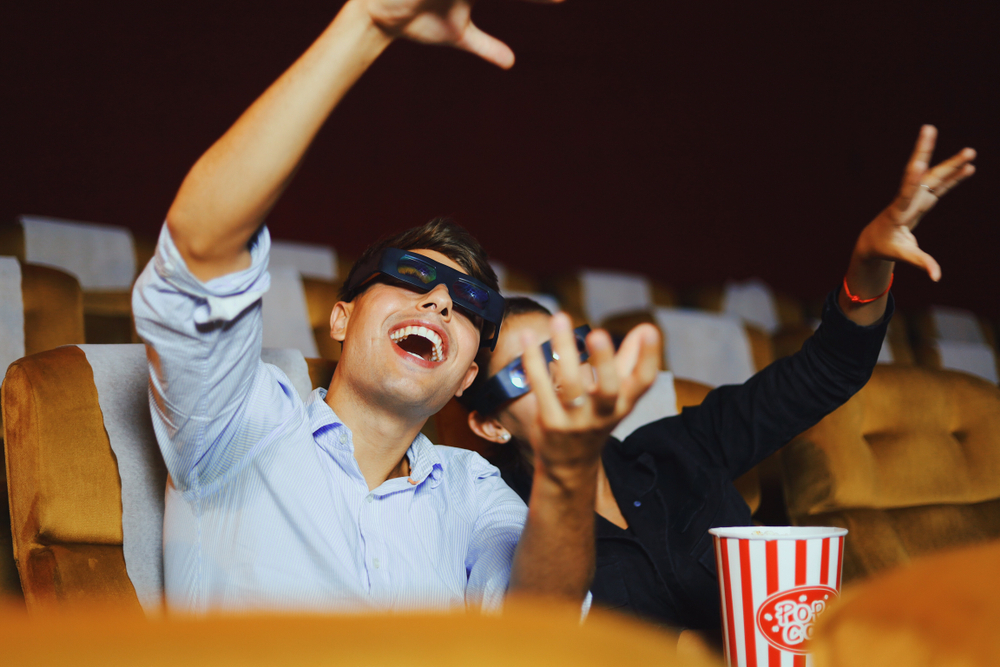Understanding 4D and 5D Experiences: Technology, Differences, and Applications
Understanding 4D and 5D Experiences: Technology, Differences, and Applications

Cinema and rides have upgraded from 2D and 3D to 4D ride and 5D cinema, which gives immersive experiences. Initially, 4D rides employed dynamic 4D seats and unique effects to match on-screen action while heightening physical experiences. However, to comply with the demand for interactive entertainment, 5D cinemas integrate hydraulics, multi-directional movement, and coordinated sensory elements, including smoke, bubbles, and fragrances. Consequently, such developments redefine viewing and render it more engaging.
What is a 4D Ride?
Concept of a 4D Ride
4D rides add physical sensations that engage several senses to 3D movies, which makes them more engaging. For example, 4D rides replicate real-life settings with seat motion, wind, rain, fog, and scents, unlike 3D film. First of all, seat movements may replicate screen activity like car pursuit or space travel using forward-backward, left-right, and up-down motions. Moreover, wind effects from positioned fans match on-screen occurrences.
Scenes with storm or splash components benefit from spritzer rain effects. For mystery or explosions, fog generators produce smoke or mist. Furthermore, the fragrance of flowers in a garden or burning tires during a car race is released by scent systems. Such physical sensations must match chromatic signals for a cohesive sensory experience. Remember that multi-sensory experiences boost audience engagement and retention. Accordingly, it renders 4D rides likable at theme parks and entertainment venues.
Difference Between 4D and 5D

Detailed Comparison of 4D and 5D Experiences
The transition from 4D to 5D cinema experiences is marked by the integration of more comprehensive special effects (SFX), which significantly deepen the level of immersion. While both 4D and 5D utilize motion seats and 3D visuals, the defining feature of 5D is its enriched sensory environment. Specifically, 5D cinemas incorporate extensive water and wind effects, elevating the sensory experience beyond the capabilities of 4D.
In 4D cinemas, the audience experiences enhancements such as seat motion, which mimics the on-screen action, and minor sensory effects like wind bursts or scents. These are designed to complement the visual and motion elements by adding layers of engagement. However, 5D cinemas extend this sensory palette considerably. They not only include these foundational effects but also integrate more dynamic and pronounced water sprays and wind effects, making scenes involving weather or high-speed movements feel much more realistic and engaging.
This increased complexity in sensory effects ensures that 5D cinemas offer a uniquely captivating experience. In these settings, viewers are not just passively watching a scene unfold; they are fully immersed in it, with the environment around them adapting dynamically to enhance the narrative. This creates a compelling, all-encompassing narrative experience that makes audiences feel truly part of the action.
Highlighting Brogent's Technological Advantages
Brogent's own originations and features upraise 4D and 5D cinematic experiences. The 6DOF motion platform in Brogent's i-Ride system moves chairs in many directions with accuracy and fluidity for lifelike simulations. The audience is surrounded by high-resolution dome displays that provide a 180-degree field of view for lower peripheral distractions.
Brogent enhances visual engagement using advanced LED screens, known for their vivid colors and sharp clarity.Its synchronization of motion seats with multi-channel surround sound verifies that sound effects match visual signals for an audio-visual experience. Custom content management systems enable the company to integrate wind, rain, and aroma dispersion, handled by software that provides accurate timing and synchronization. Such benefits make Brogent a pioneer in the area while outspreading the limits of 4D and 5D cinemas for user engagement.
Common 5D Cinemas
- Theme Parks: In theme parks, 5D cinemas simulate environments with hydraulic seats and high-impact effects. Disney's "Star Tours" uses 5D technology to submerge visitors in the Star Wars universe with seat movements and synchronized effects.
- Entertainment Centers: Entertainment centers employ 5D cinemas with sensory effects, including rain and snow. Dubai's VR Park features a 5D cinema with 6DOF seats. It gives realistic movement and atmospheric effects for better VR experiences.
- Cinemas: Traditional cinemas utilize 5D technology to be noticeable. The Cineplexx chain in Europe has assumed 5D cinemas with multi-channel surround sound systems and pneumatic seat effects. It enriches film with coordinated action and sound.
Brogent's 5D Facility Services
At Brogent, we offers 5D cinema installation, maintenance, and customization for customer needs. Our systems utilize high-precision motion platforms, including 6DOF (X, Y, Z, α, β, γ) motion bases, to simulate swing, pitch, and yaw for an authentic feel. Synchronized wind, mist, fragrance, and illumination heighten spectator engagement with these motion systems.
The modular scheme of Brogent's systems renders installation and maintenance simple. High-resolution fisheye lenses and panoramic dome panels provide edge-free, wide-angle views to increase the ride's visuals. They combine up-to-date CGI and aerial videography so each flight or interactive experience becomes striking and pleasurable. Unquestionably, such technologies promote user experience with immersive 5D cinema experiences.
Conclusion
The difference between 4D and 5D experiences is in assimilating sensory and active elements. 4D adds wind and aroma to 3D visuals. On the other hand, 5D includes motion effects, raised seat motions, and interactivity for an immersive experience. Brogent's flying theaters and motion simulators use smart motion platforms and genuine visual effects for a thrilling time. They stand out with their i-Ride and m-Ride products and content creation capabilities. Meanwhile, to learn more about Brogent's 4D and 5D solutions, click here.